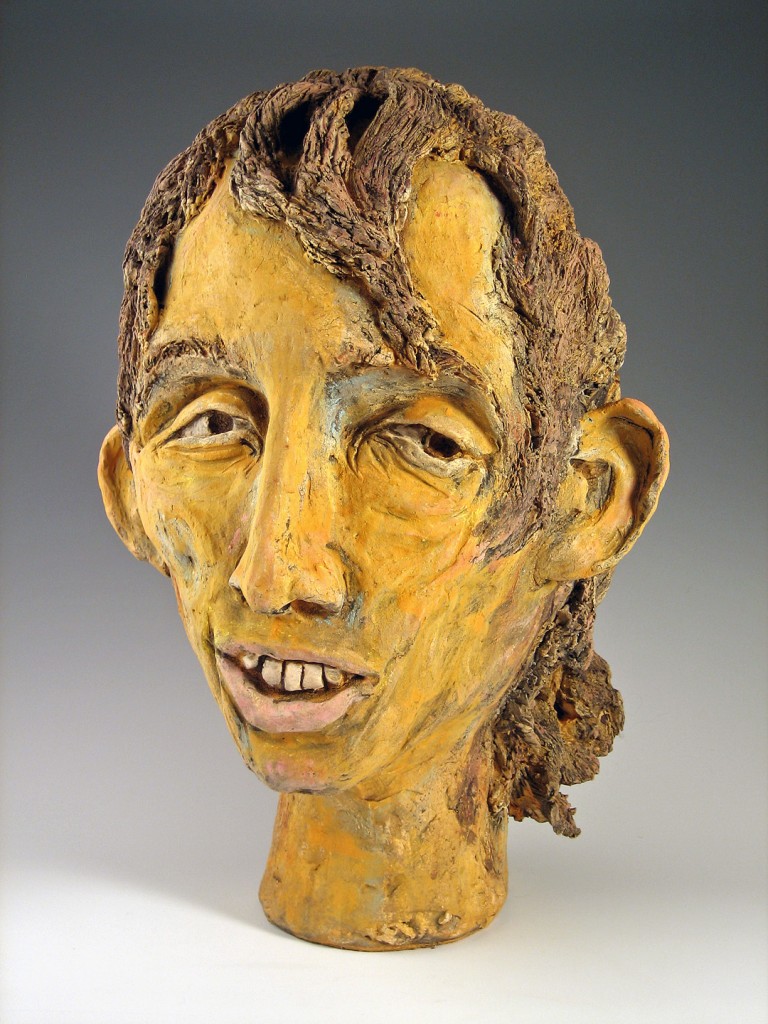
There’s a creative pause in ceramic art-making I call “The Bisque Freeze,” and I’d had a nearly two year case of it after beginning the portrait sculpture pictured above. Any manner of hesitancies can feed The Freeze, but they all are sourced from the fear of farking up your precious work with your rotten and unsure decorating choices once you’ve gotten it safely through that first bisque firing.
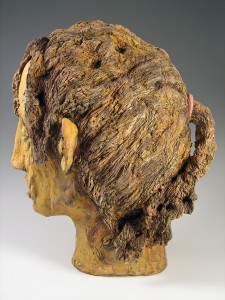
This piece was not only the biggest thing I’d made to date, she was both fearsome and delicate. Here’s a side-view showing the thin porous ponytail in the back. Lots could go wrong, but it can with any piece. With this it would just go wrong in a bigger way. I spent those paused years making other things and occasionally wondering how and when I would get back to the baby elephant in the clay studio.
While I had learned the Big Head construction methods in a two-week summer workshop with the energetic, affable and very clear instructor, Stan Welsh, he understandably did not cover finishing techniques, as the works needed at least a month to dry afterwards. Two summers later, under the surefooted guidance of the energetic, affable and very clear instructor, Tiffany Schmierer, I learned the underglaze wash and dry-brush methods that matched what I’d had in mind for the piece all along. Or more to the point, I learned about being bold and fearless once again in the face of The Bisque Freeze.
Two related asides before I continue this saga.
First, a lot of my ceramic faces are caricature portraits. To me that means that something about the very real countenance of a very real person catches me up and I find myself portraying that response in a face jug (a la my Local Talker jugs) or a portrait bust. Usually I work from a photo and only have the one view, but that’s enough and I am free to interpret the other attributes. Sometimes I go Classical Greek style and emphasize the ideal, but mostly I go Roman Republic realism, showing the gritty detail to reveal the unique character.
In that summer workshop with Stan I made two big heads, one a rather repulsive stuffed-cheeks hot dog contest eating champ, nearly ready to spew. The other, this compelling wistful anorexic woman, proudly sitting for her formal portrait because she was getting healthier. I don’t recall noticing the name or other info with the photo I found back then, just this: “She’s in recovery and gaining weight.” It’s the reason I could bear to explore her pained, skeletal features, because she was hopeful and proudly representin’!
Second, when I finally felt I could approach adding color to this Major Work, I stood it on a wooden table outside, hosed it off well, let it dry in the sun and covered it with thin washes of color, happily building up the surface information and modulating areas for values, tones and interest, deep in relationship with the persona. I was lost to my work, unaware of the handyman who’d been around a few days helping to dig a trench for new gas and drainage lines down the whole side of our house. Later that evening my hubby reported that after seeing my piece and watching me work, he had exclaimed with a bit of incredulousness, “Geez, when you told me your wife was an artist, I didn’t think you meant a real one!”
I’ve chuckled over that unvarnished Emperor-has-no-clothes honesty ever after; without question the finest validation out there. It’s about being deeply, undeniably real in all ways possible, even when real is still a completely squidgy interpretation. Me. The Subject. The Art. The Viewer. Real as real can be. So real, even the handyman acknowledges it.
Even though I’ve drifted away from making faces and figures for the time being, I still heartily enjoy them. Recently I’ve rekindled the dialogues with my portrait work as I gathered my collection of Ugly Jugs, Skull Jugs, Character Face Jugs, Local Talkers and Portrait Busts in order to display them from now until the end of April, 2013 at the Scotts Valley Library in an Art at the Library group exhibit entitled – of course – “About Face.”
As part of the renewed conversations with these pieces, I wondered if after 5+ years I could re-locate the source photo for “She’s in Recovery” and went googling around. It’s all so much easier now and I not only found it many times over, I learned her name, I learned her fate. Her name was Kate Chilver and she lost her 19-year battle with anorexia at the age of 31 in 2011.
~Liz Crain, who is profoundly glad she made this portrait bust of Kate Chilver, who’s name and struggle are fondly and respectfully acknowledged.
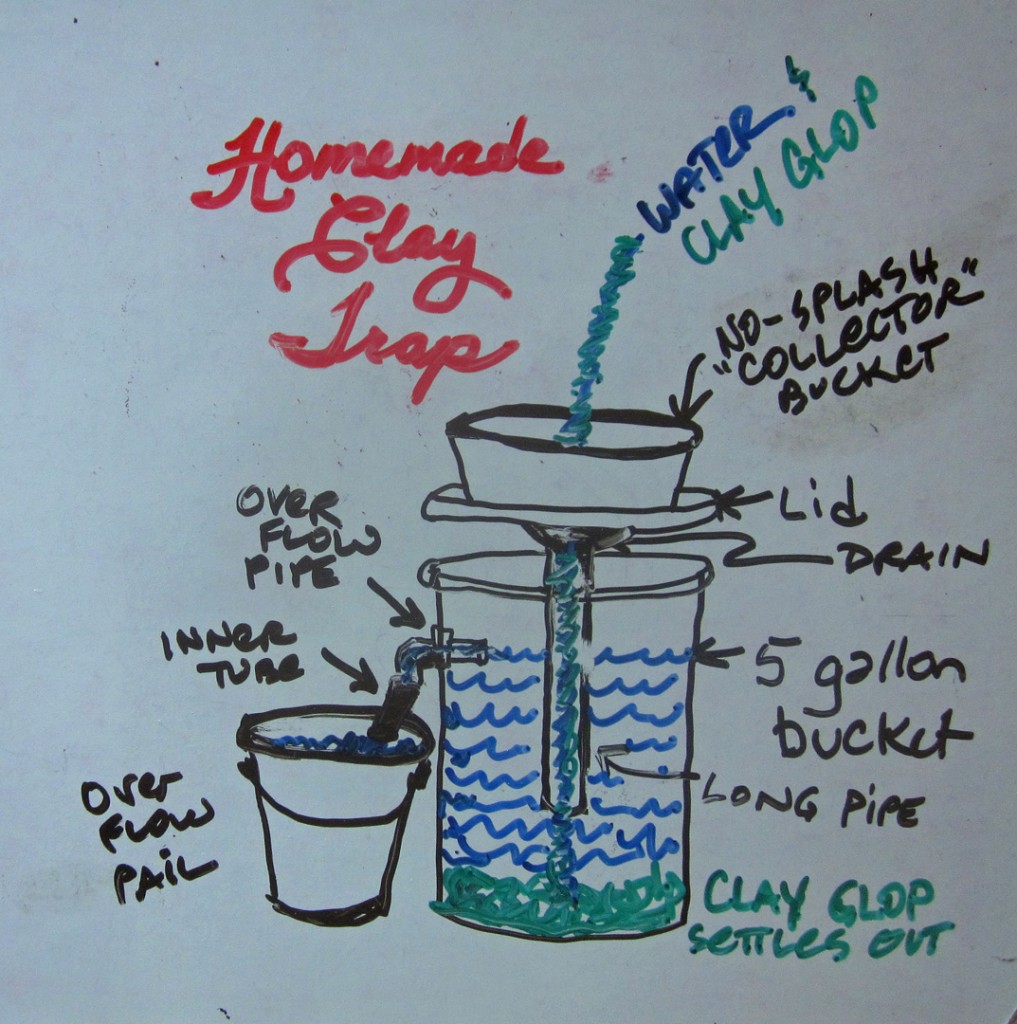
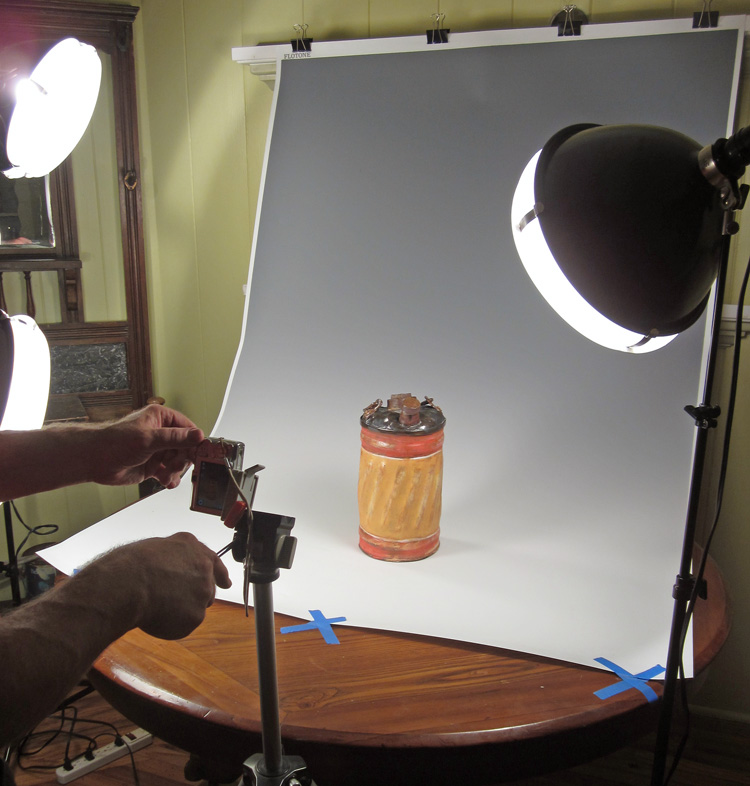
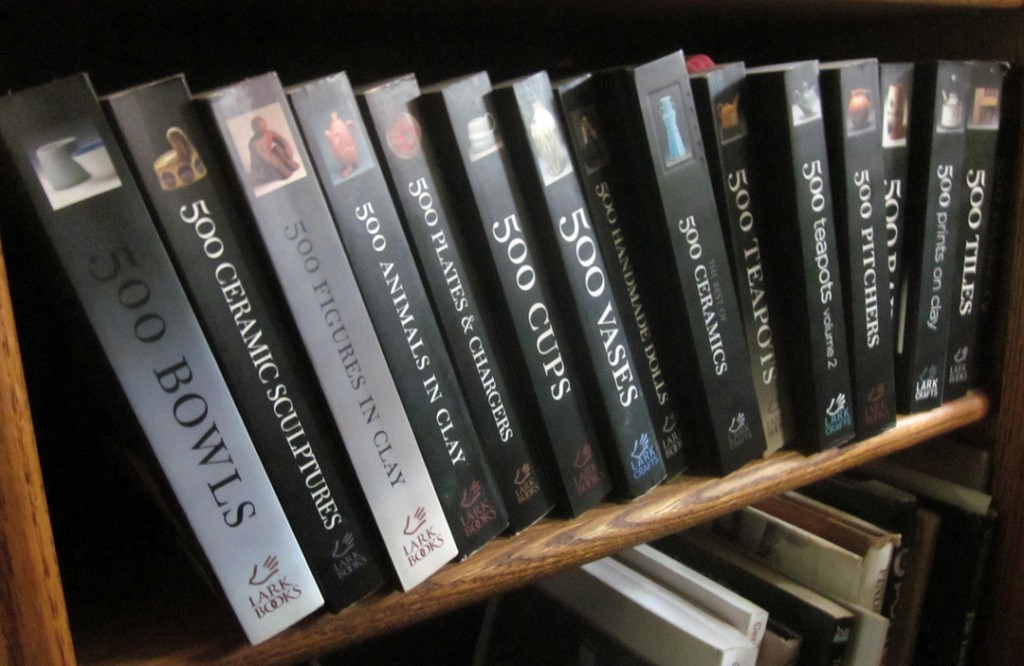

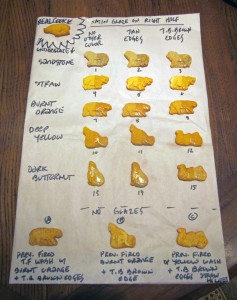
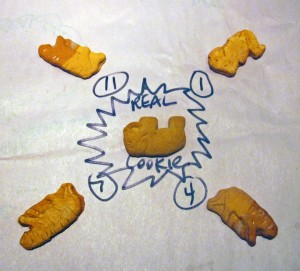 After a few more trial runs and notes, the Final Four Finishes (ignoring the clear glaze on some of them) sit alongside a real cookie and ask for comparison. The crowd-sourcing group preferred #4 without the glaze, and so did I, so that finish was the emphasis in the next round:
After a few more trial runs and notes, the Final Four Finishes (ignoring the clear glaze on some of them) sit alongside a real cookie and ask for comparison. The crowd-sourcing group preferred #4 without the glaze, and so did I, so that finish was the emphasis in the next round: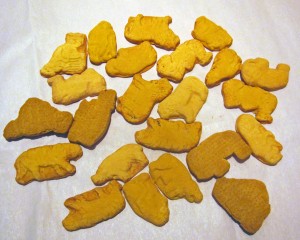 The Final Four Finishes Favorite with an added toasty edging. Could anyone guess the real ones from a random grouping of clay? In this shot the real ones are turned over, but most could not distinguish among the lot beforehand. The closest guesser noticed the excess material at the mold’s edge, not the applied colors. The job ahead was clear: make neat moldings and color them well.
The Final Four Finishes Favorite with an added toasty edging. Could anyone guess the real ones from a random grouping of clay? In this shot the real ones are turned over, but most could not distinguish among the lot beforehand. The closest guesser noticed the excess material at the mold’s edge, not the applied colors. The job ahead was clear: make neat moldings and color them well.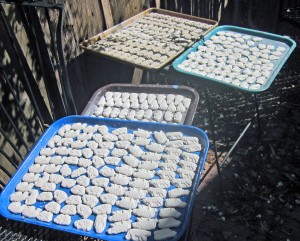
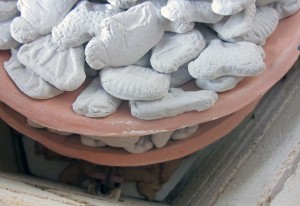
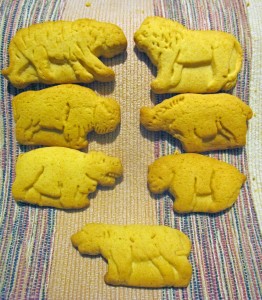
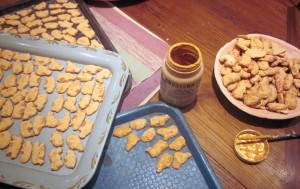 The task at hand: to color and glaze fire the collection. The sheer volume is daunting. Time to put tailbone on the stool and just get it done.
The task at hand: to color and glaze fire the collection. The sheer volume is daunting. Time to put tailbone on the stool and just get it done.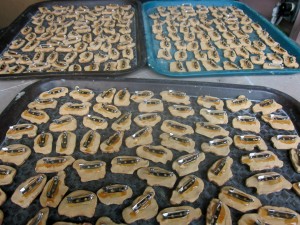
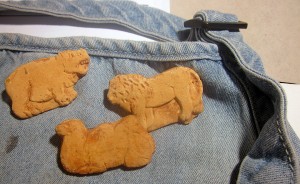
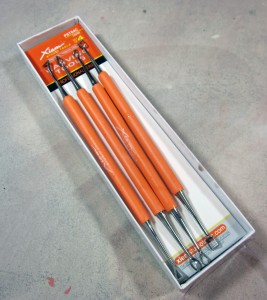 I just spent a small fortune on some clay carving tools. They are stainless steel, nicely shaped, and noticeably weighty, so maybe their price per pound compared to garden variety aluminum/wood tools is the same, or even cheaper. I don’t know. I don’t care.
I just spent a small fortune on some clay carving tools. They are stainless steel, nicely shaped, and noticeably weighty, so maybe their price per pound compared to garden variety aluminum/wood tools is the same, or even cheaper. I don’t know. I don’t care.
